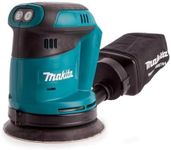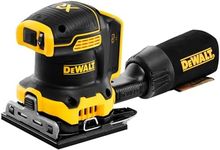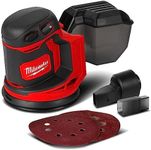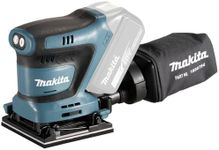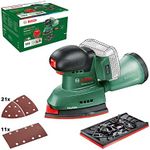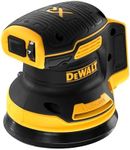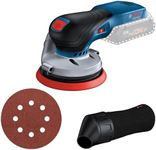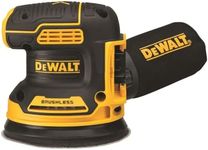Buying Guide for the Best Cordless Sanders
Choosing the right cordless sander can make your woodworking or DIY projects much more efficient and enjoyable. Cordless sanders offer the convenience of mobility without the hassle of cords, making them ideal for working in tight spaces or on large surfaces. When selecting a cordless sander, consider the type of projects you typically undertake, the materials you work with, and your comfort with handling different tools. Understanding the key specifications will help you find a sander that meets your needs and enhances your work quality.Battery VoltageBattery voltage in cordless sanders determines the power and performance of the tool. Higher voltage batteries, such as 18V or 20V, provide more power and are suitable for heavy-duty tasks and larger surfaces. Lower voltage batteries, like 12V, are lighter and more compact, making them ideal for smaller projects or detailed work. Consider the scale and intensity of your projects; if you frequently work on large or tough materials, opt for higher voltage, whereas for lighter tasks, a lower voltage might suffice.
Battery LifeBattery life indicates how long the sander can operate before needing a recharge. Longer battery life is crucial for uninterrupted work, especially on extensive projects. Some sanders offer batteries that last several hours, while others may need recharging after shorter periods. If you often work on lengthy projects or in locations without easy access to power outlets, prioritize models with longer battery life or consider purchasing additional batteries for convenience.
Sanding Speed (RPM)Sanding speed, measured in revolutions per minute (RPM), affects how quickly and efficiently a sander can remove material. Higher RPMs mean faster sanding, which is beneficial for large surfaces or when you need to remove a lot of material quickly. Lower RPMs offer more control and precision, ideal for detailed work or finishing touches. Choose a sander with adjustable speed settings if your projects vary in size and detail, allowing you to tailor the speed to your specific needs.
Dust Collection SystemA dust collection system in a cordless sander helps manage the debris created during sanding, keeping your workspace clean and reducing airborne particles. Effective dust collection is important for health reasons and maintaining a tidy work environment. Some sanders come with built-in dust bags or can be connected to external vacuum systems. If you prioritize cleanliness and health, look for models with efficient dust collection systems or compatibility with external vacuums.
Weight and ErgonomicsThe weight and ergonomics of a cordless sander affect how comfortable it is to use, especially during extended periods. Lightweight models are easier to handle and reduce fatigue, while ergonomic designs ensure a comfortable grip and better control. If you plan to use the sander for long durations or have specific comfort needs, prioritize models that offer a balance between weight and ergonomic features to enhance your user experience.
